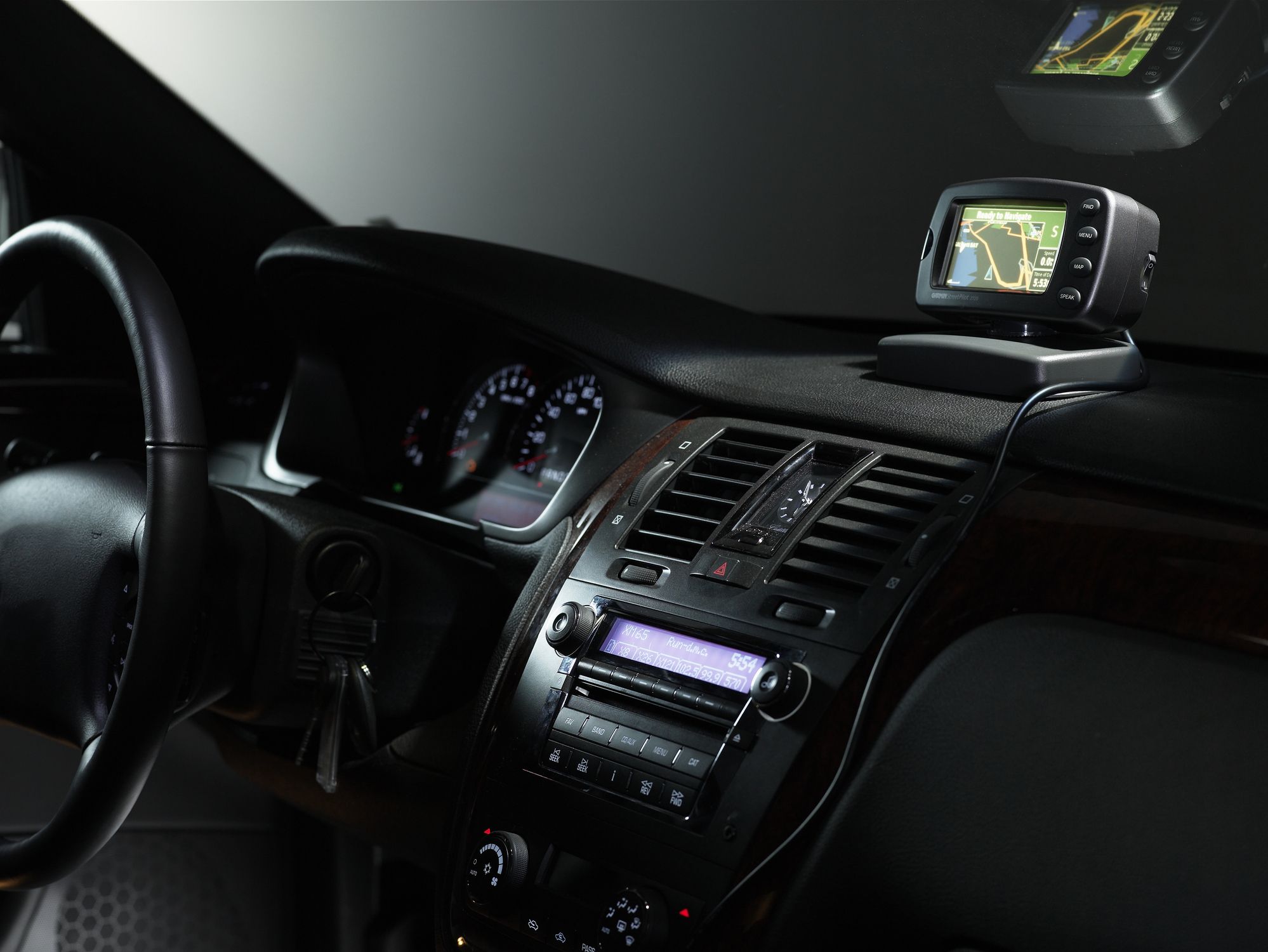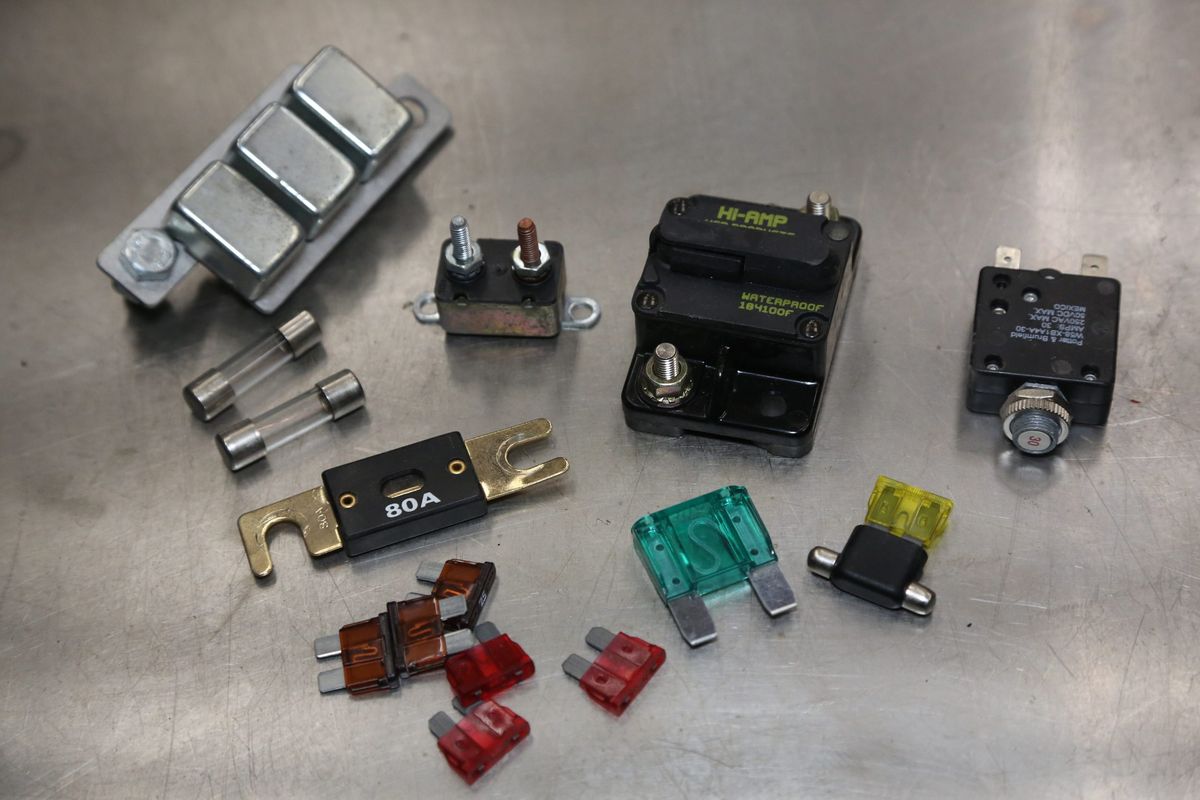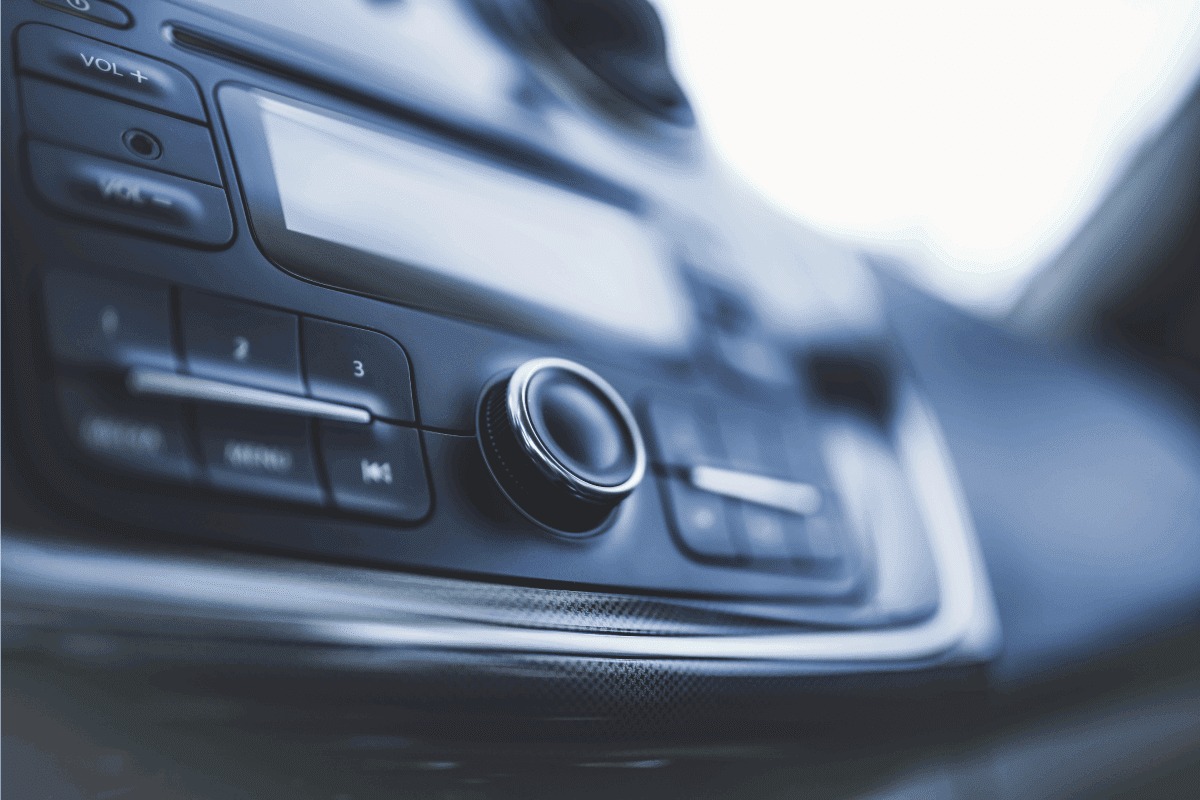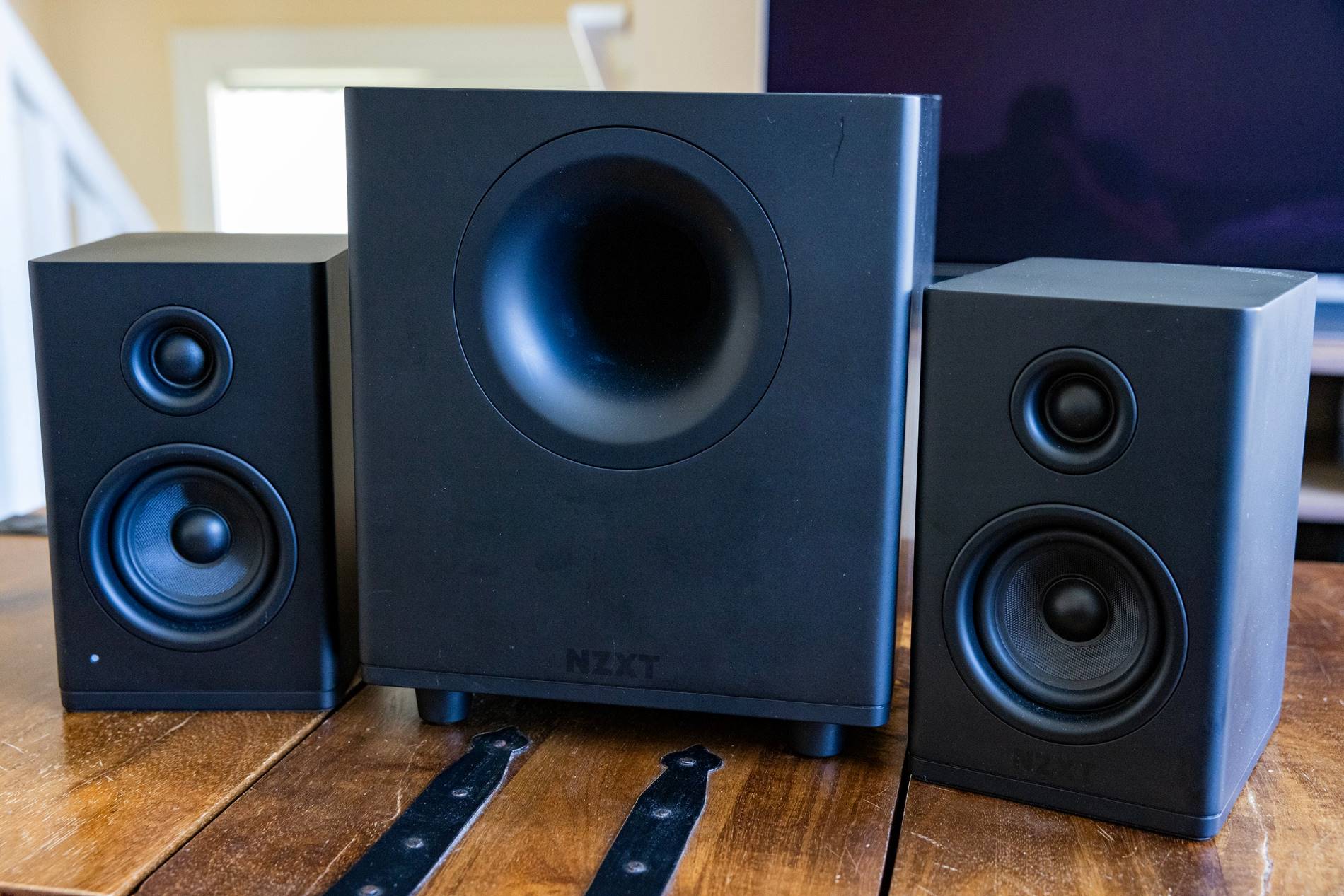Home>Devices & Equipment>Subwoofer>What Size Subwoofer Should I Get For My Car


Subwoofer
What Size Subwoofer Should I Get For My Car
Published: January 22, 2024
Find the perfect subwoofer size for your car and enhance your audio experience. Discover expert advice on choosing the ideal subwoofer for optimal bass performance.
(Many of the links in this article redirect to a specific reviewed product. Your purchase of these products through affiliate links helps to generate commission for AudioLover.com, at no extra cost. Learn more)
Table of Contents
- Introduction
- Factors to Consider When Choosing a Car Subwoofer
- Matching Subwoofer Size with Speaker System
- Subwoofer Size Recommendations Based on Car Size
- Recommended Subwoofer Sizes for Different Types of Music
- Power Handling and Sensitivity Considerations
- Enclosure Design and Space Constraints
- Installation Considerations
- Conclusion
Introduction
When it comes to enhancing the audio experience in your car, adding a subwoofer can make a world of difference. A subwoofer is a specialized speaker designed to reproduce low-frequency sounds, such as bass, with depth and clarity. It adds a whole new dimension to your music, allowing you to feel the beats and experience a more immersive audio environment.
However, choosing the right subwoofer for your car can be a daunting task. With so many different sizes, power ratings, and technical specifications to consider, it’s easy to feel overwhelmed. That’s why we’re here to help!
In this article, we will dive deep into the world of car subwoofers and explore the factors you need to consider when choosing the right size for your vehicle. We’ll also provide some recommendations based on car size, music preferences, and other important considerations so that you can make an informed decision.
Whether you’re a bass enthusiast looking to rattle windows or simply want to enhance the overall sound quality in your car, understanding the different aspects of subwoofer selection is crucial. So let’s get started and find out what size subwoofer is best suited for your car!
Factors to Consider When Choosing a Car Subwoofer
Before diving into the specifics of subwoofer sizes, it’s important to understand the key factors that should influence your decision-making process. Here are some essential factors to consider:
- Power Requirements: Different subwoofers have different power handling capabilities, and it’s crucial to match the power requirements with your existing car audio system. Ensure that your amplifier is capable of supplying enough power to the subwoofer for optimal performance.
- Sound Quality: The primary goal of adding a subwoofer is to enhance the sound quality of your car’s audio system. Consider the sound signature you want to achieve and choose a subwoofer that can deliver the desired level of bass response and overall sound accuracy.
- Budget: Subwoofers come in a wide range of prices, so it’s important to establish a budget before making a decision. Keep in mind that higher-priced subwoofers generally offer better performance and durability.
- Available Space: Consider the available space in your car for installation. Subwoofers require enclosures, and the size of the enclosure will depend on the chosen subwoofer size. Ensure that there is enough space to accommodate the subwoofer and enclosure without interfering with other car components.
- Car Audio System: Take into account the overall audio system in your car. The subwoofer should complement the existing speakers and amplifier for a balanced and integrated sound experience.
- Musical Preferences: Different subwoofers excel in reproducing certain types of music. If you predominantly listen to genres like hip hop or electronic music that heavily relies on deep bass, a larger subwoofer may be more suitable. On the other hand, if you listen to a variety of music genres, a medium-sized subwoofer may be a versatile choice.
By considering these factors, you can narrow down your options and make an informed decision when choosing the right subwoofer for your car. Remember, finding the perfect balance between size, power, and sound quality is key to achieving an immersive and satisfying bass experience on the road.
Matching Subwoofer Size with Speaker System
When it comes to selecting the size of your car subwoofer, it’s crucial to consider how it will integrate with your existing speaker system. The goal is to achieve a harmonious balance between the subwoofer and the other speakers for optimal sound quality and coherence.
One common mistake is choosing a subwoofer size that overpowers the rest of the speakers in your car. This can lead to an unbalanced audio experience where the bass overwhelms the midrange and high-frequency sounds. On the other hand, selecting a subwoofer that is too small may result in a lack of depth and impact in the low-frequency range.
To find the right match, first determine the size and capabilities of your existing speakers. If you have small or medium-sized speakers, a subwoofer with an 8-inch or 10-inch driver can complement them well while providing a noticeable improvement in bass performance.
For larger speakers, such as 6×9-inch or component speakers, a 12-inch subwoofer may be more appropriate to maintain a balanced sound. This size can handle the lower frequencies more efficiently and fill in the lower end of the audio spectrum.
It’s important to note that the size of the subwoofer alone doesn’t determine its performance. The enclosure design, driver quality, and power handling capabilities also play significant roles. Therefore, if your car has limited space or you prefer a more compact setup, you can still achieve impressive bass response with a smaller subwoofer by choosing a well-designed and high-quality model.
Ultimately, the key is to consider the capabilities and limitations of your speaker system and choose a subwoofer size that complements them. This way, you’ll achieve a well-integrated and balanced audio setup that enhances the overall listening experience in your car.
Subwoofer Size Recommendations Based on Car Size
When it comes to selecting the right subwoofer size for your car, considering the size of your vehicle can help guide you in the right direction. Here are some general recommendations based on car size:
- Compact Cars: For smaller vehicles like compact cars, a subwoofer with an 8-inch or 10-inch driver is often sufficient. These sizes provide a balance between bass performance and space considerations, ensuring that you can still enjoy enhanced low-frequency response without compromising too much trunk or cabin space.
- Mid-Size Cars: Mid-size cars, such as sedans and hatchbacks, can accommodate larger subwoofers due to their slightly larger cabin and trunk space. A 10-inch or 12-inch subwoofer is commonly chosen for these vehicles. This size range offers a good balance between bass impact and overall sound quality.
- Full-Size SUVs and Trucks: If you have a spacious SUV or truck, you have more flexibility in choosing a larger subwoofer. A 12-inch or even a 15-inch subwoofer can deliver deep, powerful bass that fills the cabin with rich low frequencies. Just remember to consider the available space for the subwoofer enclosure as larger subwoofers may require bigger enclosures.
It’s important to note that these recommendations are general guidelines, and personal preferences and other factors should also be considered. If you are particularly passionate about bass-heavy music genres or desire an immersive and impactful bass experience, you may consider going for a larger subwoofer regardless of your car size.
Additionally, it’s worth mentioning that the overall quality and performance of the subwoofer, including factors like power handling and enclosure design, matter just as much as the size. A high-quality subwoofer of the appropriate size will provide better sound reproduction and satisfaction compared to a lower-quality or poorly designed subwoofer of a larger size.
So, while car size can be a helpful factor in determining the appropriate subwoofer size, it’s essential to consider your specific needs and preferences to make the best choice for your vehicle.
Recommended Subwoofer Sizes for Different Types of Music
When choosing a subwoofer, it’s important to consider your musical preferences. Different types of music have varying levels of bass and require different subwoofer sizes to fully appreciate the low-frequency elements. Here are some recommendations based on different genres:
- Rock and Pop: Rock and pop music often have a good balance of bass and midrange frequencies. A subwoofer with a 10-inch or 12-inch driver can provide the necessary punch and depth to complement the prominent guitar and vocals found in these genres. This size range can accurately reproduce the bass guitar and drum kicks, enhancing the overall impact of the music.
- Hip Hop and EDM: Hip hop and electronic dance music (EDM) are known for their heavy bass lines and deep sub-bass elements. For these genres, a larger subwoofer is recommended to fully capture the low-end frequencies and deliver the desired thumping bass. A 12-inch or even a 15-inch subwoofer can provide the necessary power and depth to reproduce the sub-bass drops and intense beats found in these genres.
- Classical and Jazz: Classical and jazz music typically have a more delicate and nuanced bass presence. A smaller subwoofer, such as an 8-inch or 10-inch driver, can provide sufficient low-frequency support without overpowering the acoustic instruments and intricate details of these genres. This size range ensures a more balanced and natural reproduction of the acoustic bass and double bass instruments.
- Country and Acoustic: Country and acoustic music often have a warm and natural sound, with less emphasis on heavy bass. A compact subwoofer with an 8-inch driver can enhance the low-end frequencies without overpowering the overall mix. This size strikes a good balance between adding depth to the sound and maintaining the authenticity and clarity of the acoustic instruments and vocals.
Remember, these recommendations are not strict rules, and personal preferences play a significant role. If you enjoy a wide range of music genres, a versatile subwoofer in the 10-inch to 12-inch range would be a suitable choice to provide a balanced bass response across different styles.
Ultimately, the goal is to choose a subwoofer size that complements the music you love and enhances your listening experience. By considering the specific characteristics of different genres, you can make a more informed decision and enjoy a well-rounded sound system in your car.
Power Handling and Sensitivity Considerations
When selecting a subwoofer for your car, understanding power handling and sensitivity ratings is crucial. These specifications determine how well the subwoofer can handle and reproduce sound, ensuring optimum performance and preventing damage to the speaker.
Power handling refers to the amount of power that the subwoofer can handle from the amplifier. It’s important to match the power handling capabilities of the subwoofer with the power output of your amplifier. If the subwoofer is underpowered, it may not reach its full potential and can sound distorted. On the other hand, an overpowered subwoofer can be easily damaged or even cause other components of your audio system to fail.
Sensitivity, measured in decibels (dB), indicates the efficiency of a subwoofer at converting power into sound. A higher sensitivity rating means that the subwoofer can produce louder sound with the same amount of power compared to a subwoofer with lower sensitivity. It’s generally recommended to choose a subwoofer with a sensitivity rating between 85dB and 95dB for car audio applications.
It’s important to note that power handling and sensitivity ratings are interrelated. A subwoofer with higher sensitivity can produce louder sound with less power, allowing you to achieve impactful bass even with a lower-powered amplifier. In contrast, a subwoofer with lower sensitivity will require more power to reach the same volume level.
Matching the power handling capabilities and sensitivity rating with your amplifier ensures an optimized and balanced sound system. If you have a lower-powered amplifier, choosing a subwoofer with higher sensitivity can help maximize the performance without straining the amplifier. Conversely, if you have a high-powered amplifier, a subwoofer with a lower sensitivity rating can handle the power output effectively.
Additionally, it’s worth considering the impedance (measured in ohms) of the subwoofer. The impedance rating influences the way the subwoofer interacts with the amplifier. Matching the impedance of the subwoofer with the amplifier’s impedance rating ensures efficient and stable power transfer, preventing potential overheating or damage to the equipment.
Before making a final decision, carefully review the power handling, sensitivity, and impedance specifications of the subwoofer to ensure compatibility and to optimize the performance of your car audio system.
Enclosure Design and Space Constraints
When choosing a subwoofer for your car, it’s important to consider both the enclosure design and the available space in your vehicle. The enclosure plays a crucial role in shaping the sound and performance of the subwoofer.
There are two main types of subwoofer enclosures: sealed and ported.
- Sealed Enclosures: Sealed enclosures are airtight and provide a tight, accurate, and controlled bass response. They are ideal for those who prefer a more balanced and precise sound. Sealed enclosures also tend to require less space compared to ported enclosures.
- Ported Enclosures: Ported enclosures have a vent or port that allows air to flow in and out of the enclosure. This design results in a more boomy and resonant bass, giving greater emphasis to certain frequencies. Ported enclosures generally require more space compared to sealed enclosures.
Once you’ve chosen the type of enclosure, consider the dimensions and available space in your car. Measure the available trunk or cabin space where the subwoofer and enclosure will be installed. Ensure that there is enough clearance for the subwoofer to fit properly without interfering with any other car components.
If you have limited space, you may opt for a compact subwoofer that is designed to work well in small enclosures. These subwoofers often have specialized designs or features to maximize bass output in constrained spaces.
It’s important to remember that the size of the enclosure will also depend on the size of the subwoofer. In general, larger subwoofers require larger enclosures to achieve optimal performance. However, the specific requirements may vary depending on the subwoofer’s design and specifications.
Furthermore, consider the type of vehicle you have. Sedans, hatchbacks, and smaller cars may have limited space, requiring more compact subwoofers and enclosures. Larger vehicles, such as SUVs or trucks, may offer more flexibility in terms of available space.
Keep in mind that the enclosure design, along with the subwoofer’s size and specifications, will greatly impact the bass response and overall sound quality. It’s recommended to choose a subwoofer and enclosure combination that is designed to work well together, ensuring optimal performance and a seamless integration into your car audio system.
By considering the enclosure design and space constraints in your vehicle, you can select a subwoofer and enclosure combination that not only fits your car but also delivers the desired bass performance without compromising on sound quality.
Installation Considerations
Proper installation is crucial to ensure the optimal performance and longevity of your car subwoofer. Here are some key installation considerations to keep in mind:
- Placement: The placement of the subwoofer is essential for achieving balanced sound distribution. The most common location is in the trunk of the car, as it provides ample space and allows the bass to fill the cabin. However, you can also explore other options, such as under-seat or custom enclosure installations depending on your car’s layout and personal preferences.
- Wiring: Proper wiring is crucial for delivering sufficient power to the subwoofer and preventing any interference or noise. Use high-quality cables and ensure that the gauge of the wire is suitable for the power requirements of the subwoofer. Connect the subwoofer to a dedicated amplifier or use a powered subwoofer for simplified wiring.
- Enclosure Sealing: If you choose a sealed enclosure, make sure it is airtight to prevent air leakage. Use proper sealing techniques, such as applying silicone or gasket tape along the seams and edges, to ensure optimal performance and prevent any loss of bass output.
- Amplifier Matching: Ensure that your amplifier is suitable for the power requirements of the subwoofer. Matching the wattage and impedance of the subwoofer with the amplifier’s specifications will ensure seamless integration and prevent any damage to the subwoofer or the amplifier.
- Sound Deadening: Consider using sound deadening materials, such as foam or damping mats, in the trunk or around the installation area to reduce vibrations and improve sound quality. This can minimize unwanted rattling or resonance caused by the bass output of the subwoofer.
- Professional Installation: If you are not confident in your installation skills, it is recommended to seek professional help. A professional installer will ensure that the subwoofer is securely mounted, wiring is properly connected, and the overall installation is done correctly for optimal performance and safety.
Proper installation is key to achieving the best possible sound quality and ensuring that your subwoofer operates efficiently and safely. Take your time, read the installation instructions carefully, and consult resources or professionals if needed to ensure a successful installation.
Conclusion
Choosing the right subwoofer size for your car is an important decision that can greatly enhance your audio experience on the road. By considering factors such as power handling, sensitivity, musical preferences, and car size, you can find the perfect balance between bass performance and your personal needs.
Remember, larger subwoofers generally provide deeper and more powerful bass, while smaller subwoofers are more space-efficient. Depending on your car’s size and available space, you can select a subwoofer that complements your existing speaker system while providing the desired level of bass impact.
Additionally, it’s important to consider the enclosure design, installation techniques, and power requirements to ensure optimal performance and longevity of your subwoofer. Proper wiring, enclosure sealing, and amplifier matching are essential for a seamless integration into your car audio system.
Whether you enjoy rock, hip hop, jazz, or any other genre, choosing a subwoofer size that is suitable for the specific type of music you listen to can further enhance your overall listening experience.
Lastly, if you’re unsure about the installation process or want to make sure everything is done correctly, seeking professional help can save you time and ensure a successful installation.
By considering all these factors, you’ll be able to choose a subwoofer that fits your car, aligns with your musical preferences, and provides the powerful and immersive bass experience you desire. Enjoy the deep and rich audio experience as you cruise down the road!











